|
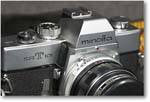 I became interested in photography shortly
after graduation from college. The first purchase was a Yashica
35mm rangefinder camera -- a brick of a camera that introduced
not only myself but also both younger brothers to photography
before it finally clicked its last. The year I got married I
bought my first SLR, a Minolta SRT-101 and a complement of three
primes, a 55mm f/1.7, a 135mm f/2.8 and a Soligor 28mm f/2.8.
For many years, the primary interest was recording family events
and travel. I became interested in photography shortly
after graduation from college. The first purchase was a Yashica
35mm rangefinder camera -- a brick of a camera that introduced
not only myself but also both younger brothers to photography
before it finally clicked its last. The year I got married I
bought my first SLR, a Minolta SRT-101 and a complement of three
primes, a 55mm f/1.7, a 135mm f/2.8 and a Soligor 28mm f/2.8.
For many years, the primary interest was recording family events
and travel.
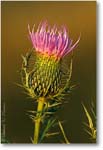 In 1990, my wife took up birding in a big
way, and we decided to visit Chincoteague National Wildlife Refuge
for the first time. Since my eyes were starting to render manual
focusing problematic -- and since I'm a gadget lover at heart!
-- I ordered one of Minolta's early autofocus cameras, the 8000i
and a modest selection of AF lenses for the trip, including a
100mm f/2.8macro and their excellent 200mm f/2.8 APO. The first
time I looked through the viewfinder and focused on a snowy egret
in breeding plummage patrolling a stretch of water that came
to be known as "Egret Alley," I was hooked! In 1990, my wife took up birding in a big
way, and we decided to visit Chincoteague National Wildlife Refuge
for the first time. Since my eyes were starting to render manual
focusing problematic -- and since I'm a gadget lover at heart!
-- I ordered one of Minolta's early autofocus cameras, the 8000i
and a modest selection of AF lenses for the trip, including a
100mm f/2.8macro and their excellent 200mm f/2.8 APO. The first
time I looked through the viewfinder and focused on a snowy egret
in breeding plummage patrolling a stretch of water that came
to be known as "Egret Alley," I was hooked!
 My wife, always an indispensible partner
in birding activities, soon thereafter acquired the nickname "Egret
Herder" in honor of my favorite subject -- which she referred
to affectionately as "the damned white bird"! My wife, always an indispensible partner
in birding activities, soon thereafter acquired the nickname "Egret
Herder" in honor of my favorite subject -- which she referred
to affectionately as "the damned white bird"!
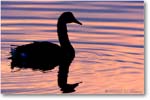 Years later, about the time I could finally afford a really long
lens, Canon introduced the image stabilized super telephotos
and the EOS 3. I switched soon thereafter, bought a copy of Arthur
Morris' book, The Art of Bird Photography (highly recommended)
and attended one of his Southwest Florida Instructional Photo
Tours. This led to two conclusion. First, there is no substitute
for big glass. And second, not only should substandard images
be discarded immediately but situations where they must inevitable
result should be passed up altogether. The change in perspective
was subtle but the percentage of keepers began to rise immediately. Years later, about the time I could finally afford a really long
lens, Canon introduced the image stabilized super telephotos
and the EOS 3. I switched soon thereafter, bought a copy of Arthur
Morris' book, The Art of Bird Photography (highly recommended)
and attended one of his Southwest Florida Instructional Photo
Tours. This led to two conclusion. First, there is no substitute
for big glass. And second, not only should substandard images
be discarded immediately but situations where they must inevitable
result should be passed up altogether. The change in perspective
was subtle but the percentage of keepers began to rise immediately.
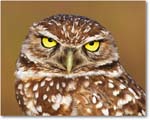 I made the move to digital starting in
2003 and finally sold all film bodies soon after. Now, I shoot
exclusively with Canon 1D-series digital SLR bodies, usually
attached to an image-stabilized supertelephoto mounted on
a Gitzo tripod with Wimberley gimbal head. Current equipment
is described on the Gear page. I retired in 2003 after a career of nearly
four decades as a computer engineer in real-time mission critical
systems research, technology, development and test. This has provided
more time to pursue photography in a variety of ways. I made the move to digital starting in
2003 and finally sold all film bodies soon after. Now, I shoot
exclusively with Canon 1D-series digital SLR bodies, usually
attached to an image-stabilized supertelephoto mounted on
a Gitzo tripod with Wimberley gimbal head. Current equipment
is described on the Gear page. I retired in 2003 after a career of nearly
four decades as a computer engineer in real-time mission critical
systems research, technology, development and test. This has provided
more time to pursue photography in a variety of ways.
%20Cincy07_Y2F3459%20copy.jpg) Besides nature and birds, photographic
interests include scenic; macro and floral; astronomy; sports
(primarily tennis, both as a player and a photographer; you'll find a
collection of
professional players in action in my portfolio, taken at the Western &
Southern Open, Cincinnati); and historical subjects, including living history,
cultural heritage, architecture and gardens. But the first love
remains birds, as is clearly evident from the preponderance of
avian images on the portfolio page. Besides nature and birds, photographic
interests include scenic; macro and floral; astronomy; sports
(primarily tennis, both as a player and a photographer; you'll find a
collection of
professional players in action in my portfolio, taken at the Western &
Southern Open, Cincinnati); and historical subjects, including living history,
cultural heritage, architecture and gardens. But the first love
remains birds, as is clearly evident from the preponderance of
avian images on the portfolio page.
 I have been interested in the night sky
since an early age, purchasing my first telescope at about 15
years of age with money earned through personal labors, and I
occasionally combine both photography and astronomy in an outin For
more, including many astronomy and weather links, several presentations and
some great lists of deep sky objects to observe visit, the GrayFoxImages
Astronomy Page. I have been interested in the night sky
since an early age, purchasing my first telescope at about 15
years of age with money earned through personal labors, and I
occasionally combine both photography and astronomy in an outin For
more, including many astronomy and weather links, several presentations and
some great lists of deep sky objects to observe visit, the GrayFoxImages
Astronomy Page.
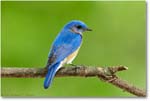 In addition to photography and astronomy,
I am keenly interested in conservation, ecology, sustainability,
cultural preservation and the natural basis of ethical and moral
conduct. Elsewhere on the site, you will find a link to my thoughts
on Nature and Ecology
and the mindset we must carry forward in order to preserve our
natural heritage for future generations. In addition to photography and astronomy,
I am keenly interested in conservation, ecology, sustainability,
cultural preservation and the natural basis of ethical and moral
conduct. Elsewhere on the site, you will find a link to my thoughts
on Nature and Ecology
and the mindset we must carry forward in order to preserve our
natural heritage for future generations.
 For me, photography is a hobby and a source
of personal satisfaction. I am not a pro, and do not intend to approach
imaging as a
professional, for-profit activity. I do this for fun and because
I love nature, I enjoy the solitude of being outdoors with wildlife, and I
am thrilled by the prospect of getting near enough to nature's creatures
to photograph them without causing distress. For me, photography is a hobby and a source
of personal satisfaction. I am not a pro, and do not intend to approach
imaging as a
professional, for-profit activity. I do this for fun and because
I love nature, I enjoy the solitude of being outdoors with wildlife, and I
am thrilled by the prospect of getting near enough to nature's creatures
to photograph them without causing distress.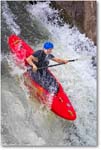 The Travel and Tennis portfolios are similarly undertaken
solely for personal reasons.
The Travel and Tennis portfolios are similarly undertaken
solely for personal reasons.
For that reason, portfolio photos are not offered for sale to the public.
On the other hand we do wish to support education and research, particularly
as it relates to nature and wildlife preservation, conservation,
environmental sustainability, public awareness and like purposes. As a
result, images in the Nature Portfolio may be made available at no cost to
qualifying organizations on a one-time right-to-use basis for educational or
scientific research purposes. Please contact me with details of intended use.
© 2013 Michael W. Masters |


